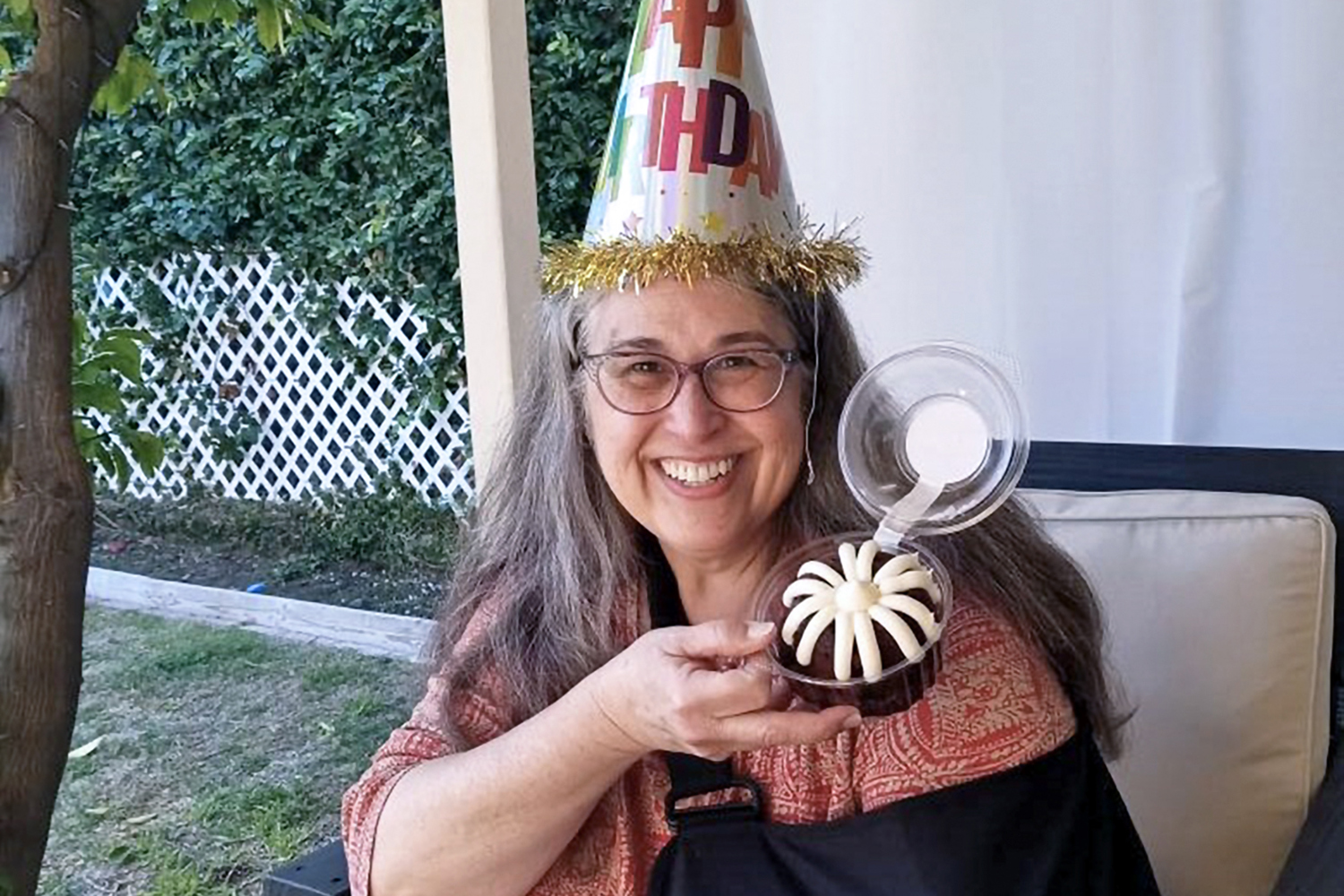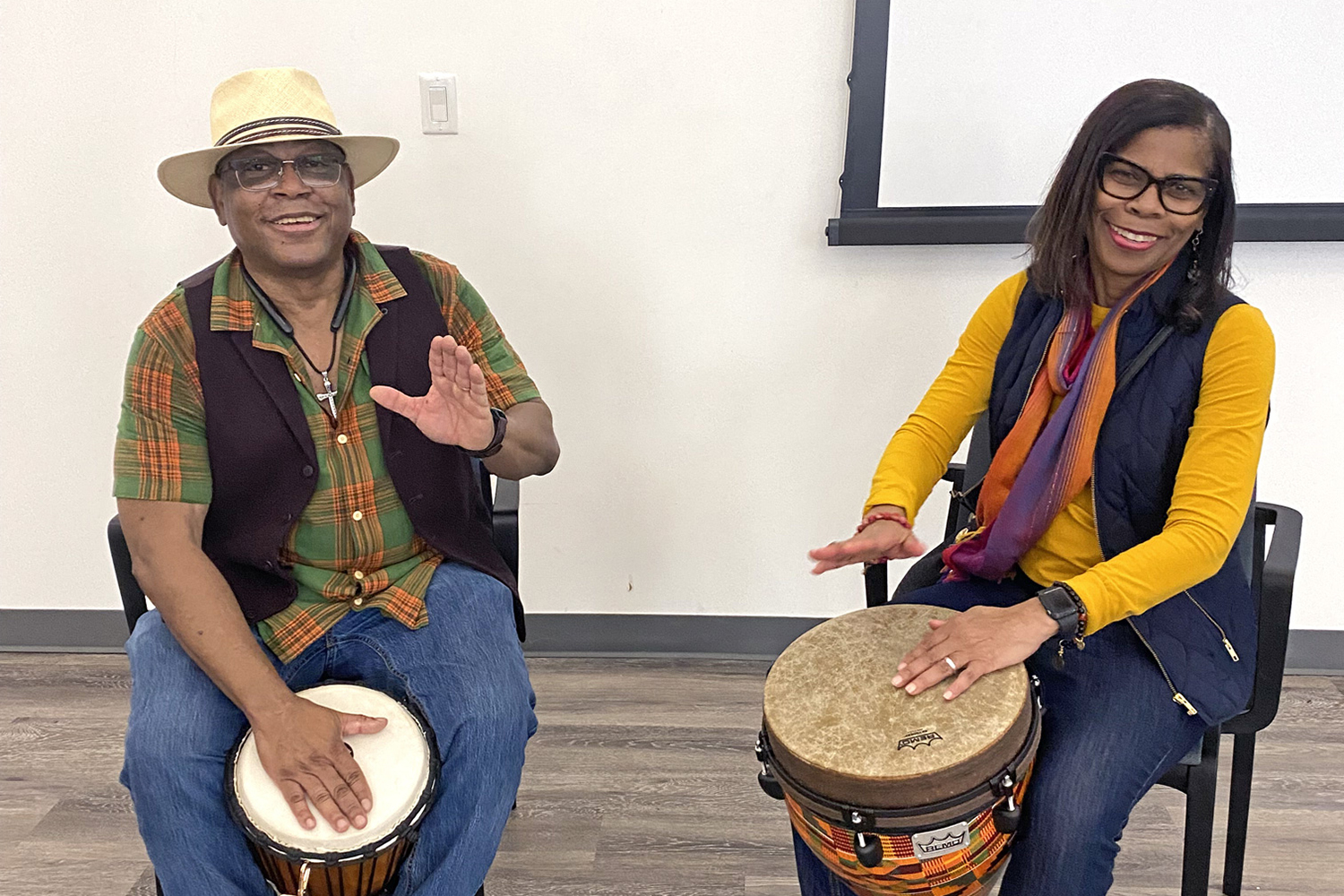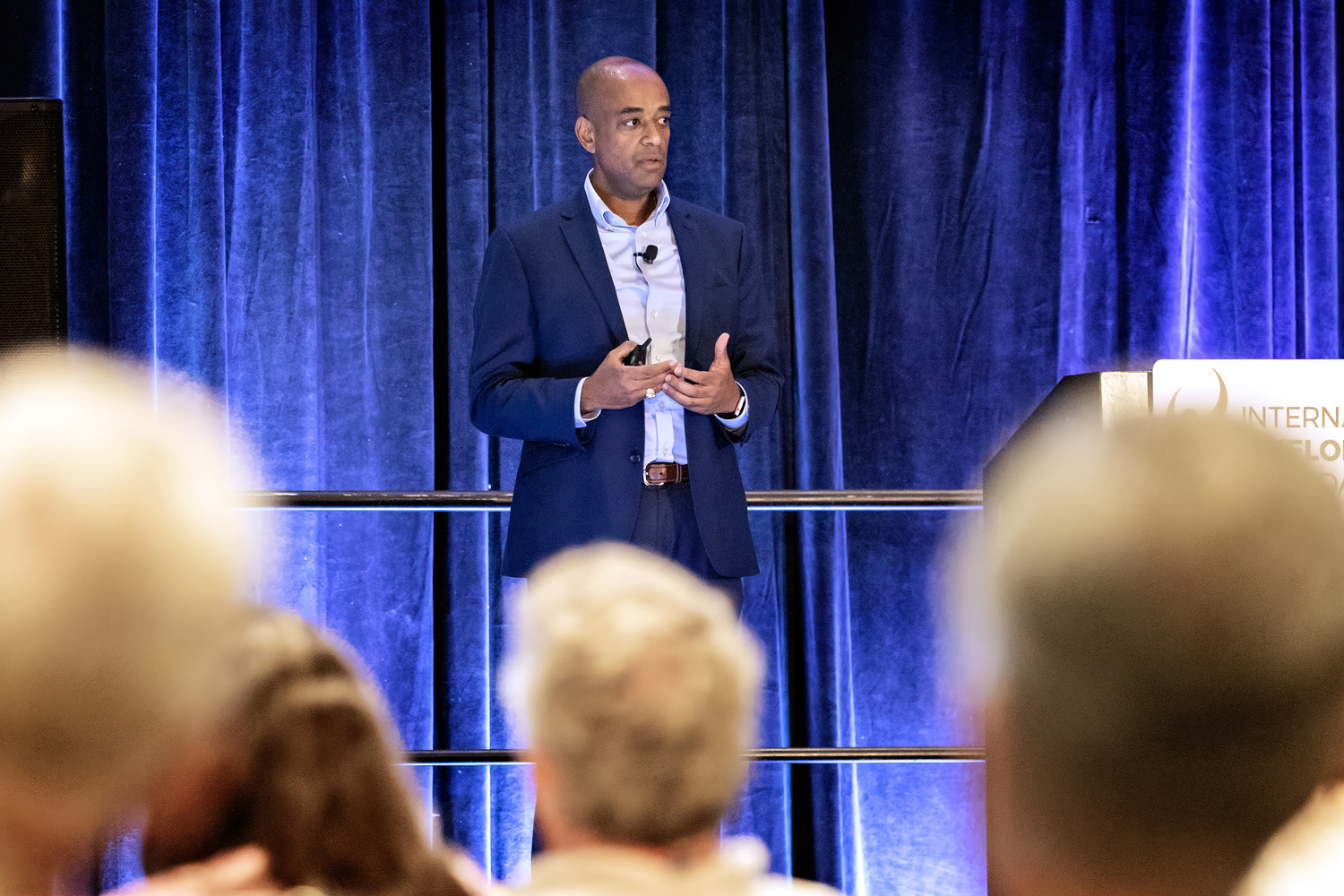TOWARD THE END OF 2014, 52-year-old Doreen Zetterlund was experiencing muscle spasms in her neck and shoulders. She also had a lump on the side of her neck but chalked up her symptoms to stress. When the spasms persisted despite physical therapy, she went to her doctor, who ordered an MRI. The scans showed enlarged lymph nodes throughout her body, and a biopsy of a lymph node from under her arm revealed that Zetterlund, who lives in Glendale, California, had small lymphocytic lymphoma (SLL), a normally slow-growing blood cancer that affects B cells, which help the body fight infection.
SLL is the same disease as chronic lymphocytic leukemia (CLL) with one difference. In SLL, the cancer cells are found primarily in the lymph nodes, and in CLL, they are in the bone marrow and blood. Zetterlund has since progressed to having both conditions, called CLL/SLL. The five-year relative survival rate for CLL/SLL is close to 88%. Given the slow-growing nature of both types of blood cancer, her medical team recommended that she not be treated immediately. Instead, she entered what would turn out to be a two-year watch-and-wait period—more like “watch and worry,” Zetterlund says—to see if the cancer or its symptoms were progressing.
“The first thing when you hear you have cancer is that you want it out of you,” Zetterlund says. “The idea that you have cancer and they’re not going to take it out of you and it’s not curable—that’s a big pill to swallow.”
Options and Advances
According to the Leukemia & Lymphoma Society, one person in the U.S. is diagnosed with a blood cancer every three minutes. Some of these patients will finish treatment with no signs of cancer and move on with their lives, but most people with blood cancer, including those with chronic leukemia and multiple myeloma, will often go through cycles of remission, relapse and treatment. They will need regular blood tests to monitor their blood counts and will take medications to keep their cancer in check. These chronic blood cancers aren’t yet curable, but they are highly treatable, says Ehab Atallah, a hematologist-oncologist and leukemia specialist with the Clinical Cancer Center at Froedtert Hospital in Milwaukee.
When Zetterlund was first diagnosed with blood cancer in early 2015, chemotherapy was the only approved treatment option for CLL. Today, doctors primarily choose between two targeted drug classes that block either BTK or BCL-2, two proteins that contribute to cancer cell survival.

Almost eight years after her cancer diagnosis, Doreen Zetterlund celebrated her 61st birthday in December 2022 with friends, who have a tradition of passing around the same birthday hat for each other’s birthday. Photo by Anthony Napoli
People with CLL often can move from one treatment to another. On Jan. 19, 2023, the Food and Drug Administration (FDA) approved Brukinsa (zanubrutinib), a third BTK inhibitor for CLL, based on evidence that 88% of people who started with this treatment for CLL had a response. In a second study, 80% of people who had previously received one of the two other approved BTK inhibitors, Imbruvica (ibrutinib) or Calquence (acalabrutinib), responded to the Brukinsa treatment.
Patients typically take a BCL-2 inhibitor daily with weekly injections of monoclonal antibodies for a period of 12 to 24 months, Atallah explains. During this time, people require careful monitoring and frequent visits to the doctor’s office. BTK inhibitors are used alone until treatment progression, but people don’t require frequent visits to the doctor. It’s not clear which treatment approach delivers the best outcomes as they haven’t been tested in a head-to-head clinical trial. In practice, Atallah says doctors should discuss the patient’s individual preferences, priorities and concerns to determine the best treatment.
“With BTK inhibitors, patients take a pill [each day] forever as long as it’s working,” Atallah says. “BCL-2 inhibitors are taken for a more limited time but involve more work up front. Patients have to come in for an IV and lab checks. For some, a pill they take every day is a lot easier.”
Even with the significant growth of treatment options for CLL, Atallah says that chronic myelogenous leukemia (CML) is the “poster child” for progress in cancer treatment. The FDA approved the tyrosine kinase inhibitor (TKI) known as Gleevec (imatinib) for CML in 2001. Follow-up data published five years after the FDA approval showed 98% of 533 patients achieved complete responses with a five-year relative survival rate of 89%. Before Gleevec, taken as a daily pill, only 30% of people with CML survived five years. Gleevec immediately transformed a fatal condition into a chronic one for many.
Today there are four approved TKIs for CML. Still, patients have to make tricky calculations about their costs, associated risks and side effects to choose among them. With ongoing treatment, many people with CML can expect to live a near-normal lifespan, but they also face the reality of constant monitoring, costly treatment and ongoing fear of relapse.
Setting New Life Goals
Mel Mann of Atlanta and Yelak Biru of Los Angeles know this sense of altered reality and the constant fear of relapse well. In 1995, Biru learned he had multiple myeloma, an incurable blood cancer that starts in white blood cells called plasma cells. Biru was just 25 years old, newly married and beginning a graduate program in computer science. The only treatments available then were high-dose chemotherapy and a bone marrow transplant.
“The hematologist told me this is cancer, and I would probably not live to my 30th birthday,” says Biru, who is now 53 and the CEO of the International Myeloma Foundation, a nonprofit organization that supports patients through research, advocacy and education. Based on the limited treatment options available at the time, he and his wife expected the life they had just begun together would be cut short. They made their future plans with this in mind, including opting not to have children.

Mel Mann participated in a drum exhibition with his wife, Cecelia, to celebrate Black History Month in February 2023 at the local senior center in Clayton County, Georgia. Photo courtesy of Mel Mann
Also in 1995, 37-year-old Mann, an Army major with a wife and a 5-year-old daughter, found out his back pain was actually a symptom of CML, a type of cancer within his blood-forming bone marrow cells. The doctors told him that a bone marrow transplant could offer a chance for long-term survival, but without it, he had perhaps three years to live. None of Mann’s relatives was a match for the transplant, however, and searches through national donor registries came up empty too. Mann found another solution in 1998, when he enrolled in the clinical trial at the University of Texas MD Anderson Cancer Center in Houston for the then-experimental Gleevec.
“I was the first person [in the trial] to respond overall and keep the response,” Mann says. That was 25 years ago, making Mann the longest-living person on the drug. Despite his remarkable and prolonged response to the ongoing treatment, he still takes nothing for granted. “You live between tests and doctor visits,” says Mann, who retired from the military after his diagnosis. “You kind of hold your breath, and you take it bit by bit.”
Mann says out-of-pocket medical costs, which can be significant despite health insurance, become a permanent part of your budget. He notes that most people with blood cancer, himself included, experience fatigue. Gleevec comes with a long list of other side effects, including stomach pain, bleeding problems and chest pain. And, Mann notes, the COVID-19 pandemic brought more reminders that he and so many others with chronic and immune-compromising conditions are at elevated risk for other health problems.
Even so, Mann, who is now 66, says he’s lived his life all these years with a sense of purpose. He has spent his time organizing bone marrow drives, running marathons and races, and earning four degrees since his 1995 diagnosis. He has set and reached a multitude of goals he never would have considered without the CML diagnosis.
“My life view is different from other people,” he says. “I’m focused on enjoying life. When I was in the military, I was always thinking about the next rank. Once I was diagnosed, I stopped thinking about rank. I wanted to live a good life and be with my family.”
Shared Decisions and Hope
After his diagnosis in 1995, Biru finished a combination of the chemotherapy drugs vincristine and doxorubicin with the steroid dexamethasone. This treatment regimen sent his cancer into remission for five years, which was long enough for new multiple myeloma treatments to come along. Today more than 20 approved medications are available to treat the disease.
Biru says as incredible as the advances in treating myeloma have been, they also highlight challenges and inequities in treatment access. When he was diagnosed with myeloma, he was an underinsured graduate student. His initial chemotherapy treatment left him more than $100,000 in debt. And new treatments that hold promise typically aren’t accessible to everyone. For example, CAR T-cell therapy, in which doctors genetically modify a patient’s own T cells to fight myeloma, is usually available only at university hospitals and major cancer centers, he says. Patients need guidance to weigh the sheer number of options, but they may not have access to a myeloma specialist in their area.
“The need to participate in your own treatment, in my opinion, becomes higher, and at the same time, if you end up living longer, issues come up,” Biru says. “Your risk for cardiac complications or other comorbidities grows. There’s a need for coordinated care, but who will coordinate that care for you—your primary doctor or a myeloma specialist?”

Yelak Biru, who was diagnosed with multiple myeloma in 1995, shared his story at the International Myeloma Foundation’s (IMF) Patient and Family Seminar in Los Angeles in 2018. Biru, who is now the CEO of IMF, usually ends each of his presentations by saying, “While avoiding to die, don’t forget to live.” Photo courtesy of Yelak Biru
Biru says his cancer isn’t progressing now, but he is “always preparing for what’s next.” While the number of treatment options continues to grow, he says, myeloma “is still incurable. Some lucky ones like me and some of my friends have lived over 20 years. A majority live five to 15 years. We need more treatments and more treatments that have less side effects.”
Biru notes that patients need to learn to live one day at a time while embracing the future. He wants others with chronic cancer to know what he did not realize at the start, almost 30 years ago: “Life could [still] be long,” he says. “Make the decisions you want to make today with the anticipation of hope, which is really, in my opinion, the most important factor in a myeloma journey or any chronic illness.”
Front-load Your Knowledge
In 2016, Zetterlund’s blood tests showed the cancer was progressing. It was time to start treatment. She had prepared in advance by visiting multiple oncologists and what she calls “front-loading my knowledge.” Given the markers her cancer cells carried, she knew chemotherapy wasn’t the ideal treatment choice. She set her sights on a clinical trial for a BTK inhibitor now marketed as Calquence. She landed the last spot in the trial, and treatment began early in 2017.
The cancer in her lymph nodes “melted very rapidly,” Zetterlund says. “Within two or three weeks, the lump on her neck was gone.”
Many people with chronic blood cancers have found the support and information they need to cope with and tackle their diagnosis along with new outlets for their talents through nonprofit advocacy organizations, including:
After almost five years of taking Calquence, Zetterlund had to discontinue treatment in October 2021 after an endoscopy showed irritation in her esophagus and bleeding ulcers in her stomach from gastric reflux. She needed to take a proton pump inhibitor, a drug that can decrease the amount of Calquence that is absorbed in the blood. Zetterlund is once again in the holding pattern known as “watch and wait,” monitoring for signs of cancer growth through blood tests.
“We know the shoe will drop because of my age; I’m young at 61,” she says. If the cancer progresses, she may try the new tablet version of Calquence that she can take along with her reflux medications. She’ll also consider other options, including clinical trials of new treatment combinations, in part due to ongoing concerns about treatment costs. “There are still so many challenges I’m contemplating,” she says.
Treatment Without End?
Some people with CML who have a track record of sustained and durable response to therapy may get a reprieve from ongoing therapy. Recently published studies have found that some patients can safely stop treatment with Gleevec and similar drugs following what’s called a deep molecular response, meaning that the genetic abnormality that causes CML is either undetectable in the blood or present at barely detectable levels.
A study published January 2021 in JAMA Oncology that included 172 adults found that 60.8% of people who stopped taking TKIs achieved treatment-free remission for at least three years. Among those who remained in remission a year after stopping treatment, many reported less fatigue (80.4%), depression (34.8%), diarrhea (87.5%), sleep disturbance (21.4%) and pain (4.5%). However, only 20% to 25% of people with CML achieve and sustain a deep molecular response long enough to even consider stopping treatment. In addition, many people who are eligible still have anxiety about stopping treatment.
“Treatment [for CML] works really well, and survival is equal or similar to that of the general population,” says Atallah, who led the JAMA Oncology study. “But patients aren’t cured if they have to take a pill every day.” Now that many people with chronic blood cancers are living longer, he says, the goals of research and treatment are to extend survival and make lives better with fewer side effects and lower costs.
Even with considerable advances, there is still much to learn. For example, many people with multiple myeloma do not reach normal life expectancy, says Joseph Mikhael, a hematologist-oncologist at the Translational Genomics Research Institute in Phoenix and the chief medical officer of the International Myeloma Foundation. Those who continue to live long after their initial diagnosis increasingly face challenges that come with aging alongside complications of a chronic and incurable disease, he says. But he adds that he tries to encourage his patients to remain optimistic as treatment options continue to advance. “It’s not just about whether the cancer has woken up yet,” he says, “But where are you going for vacation? What are you doing for fun? How are your grandchildren?
“We don’t treat myeloma; we treat people,” Mikhael says. “As people live longer in the larger context, success is not measured [only] as the absence of this disease but by life experiences and overall health. I love seeing patients thrive.”
Cancer Today magazine is free to cancer patients, survivors and caregivers who live in the U.S. Subscribe here to receive four issues per year.





